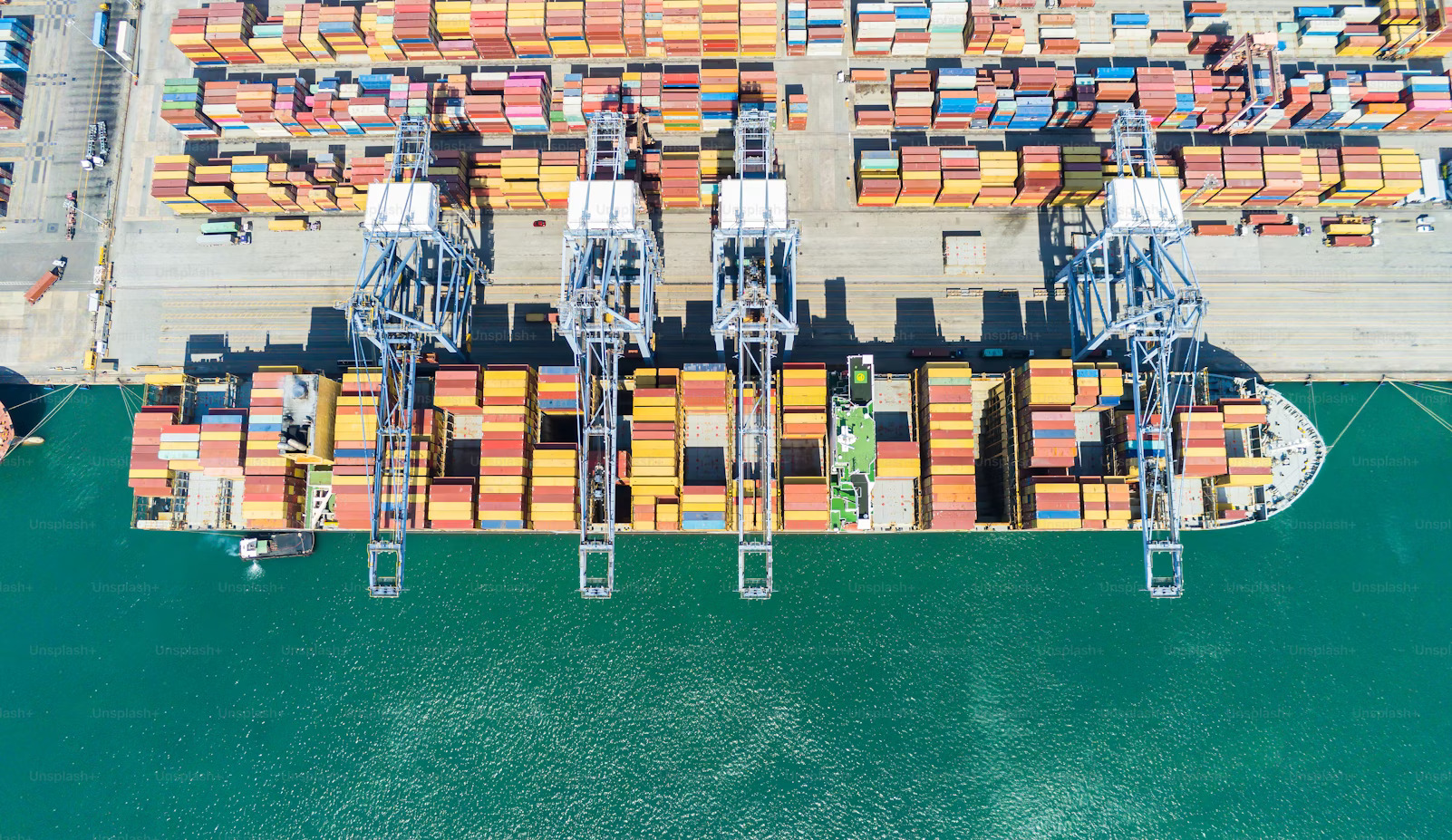Leveraging “Brand Caribbean”
A Unified Approach To Navigating Tariffs and CBAMs
By Dr Keron Niles

Tariffs as Economic Weapons
Tariffs have long been a fixture of trade policy, used either to protect domestic industries or as leverage in disputes. However, in recent years, they’ve been deployed with renewed intensity and unpredictability. During the first Trump administration, for example, the United States imposed sweeping tariffs on Chinese goods. Some observers believed this might lead to “trade diversion”, with global supply chains shifting to other countries. But empirical studies show that while Chinese exports to the U.S. declined, this did not translate into a significant uptick in exports from other countries, including those in the Caribbean.
The lesson here for Caribbean exporters is sobering: we cannot rely on the fallout from great-power trade disputes to boost our export fortunes. These moments may present tactical opportunities, but they do not provide a stable foundation for long-term strategy. Moreover, tariff wars can trigger retaliatory measures that affect even third-party nations. These include non-tariff barriers such as visa restrictions, licensing requirements, and heightened scrutiny of financial transactions—all of which can disrupt business operations.
In this new era, the very foundations of the global economic order—predictability, transparency, and fairness—are under strain. The idea that every country must now navigate a separate set of rules and concessions runs counter to the multilateral principles established under the General Agreement on Tariffs and Trade (GATT) and the World Trade Organization (WTO). This growing trend towards nationalism and bilateralism creates uncertainty for Caribbean firms. In such a climate, our response must be not just smart, but coordinated. Fragmented national strategies within CARICOM will likely fail. Instead, unified, region-wide trade diplomacy is essential to secure deals that protect and advance the region’s shared economic interests.
The Rise of Carbon Taxes at the Border
Meanwhile, a quieter revolution is taking place at the intersection of trade and climate policy. To discourage carbon leakage—the relocation of industries to jurisdictions with weaker environmental standards—major economies like the European Union and the United Kingdom are introducing CBAMs. These impose a carbon price on imported goods, calculated based on the emissions generated during production.
For Caribbean exporters in sectors like cement, aluminium, petrochemicals, and steel, this spells rising costs and greater compliance burdens. Importers in these markets will demand verified data on emissions, and the process of certifying carbon footprints may be onerous for small producers.
However, there is another side to the coin. CBAMs can be catalysts for greener production. If Caribbean producers can transition to low-carbon methods, they may become more competitive in climate-conscious markets. But such a transition requires support—financial, technical, and policy-based. A fairer global approach would see some of the revenues generated by CBAMs being redirected to assist decarbonisation in developing countries, including those in the Caribbean.
One proactive step could be the development of our own carbon adjustment mechanism. While complex, this could allow us to align with global norms and reduce exposure to external carbon tariffs. Again, this is best approached at a regional level to avoid duplication, share costs, and maximise policy coherence.
Why the Regional Approach Matters
In both the trade and climate arenas, a unified Caribbean front offers significant advantages:
• First, despite our small individual markets, the region collectively can be a stable and appealing economic zone. In a world increasingly shaped by uncertainty, our shared frameworks—such as the Revised Treaty of Chaguaramas—offer rules, predictability, and decades of experience in regional trade cooperation. This institutional backbone is a strength that should not be underestimated.
• Second, geopolitically, we matter more together than we do apart. Whether due to our natural resources, our location, or our strategic importance in the hemisphere, the Caribbean has different forms of leverage that can be employed, especially as global powers like the US and China vie for influence in the region.
• Third, we already have the institutions needed for coordinated action. CARICOM’s Office of Trade Negotiations (OTN), the CARICOM Private Sector Organisation, and various industry associations provide both technical capacity and platforms for joint initiatives. For instance, pooling resources to undertake joint trade missions or regional branding campaigns could reduce costs and expand our reach.
• Fourth, the Caribbean has a powerful brand. Type “Caribbean” into your browser and compare it to searching for our beautiful twin island state—you’ll see the difference. Globally, “Caribbean” evokes sun, music, rum, and warmth. In times of heightened nationalism and concern about “carbon miles,” our regional identity could be a major asset. Branding Caribbean goods under this umbrella could strengthen their appeal in both traditional and emerging markets.
• Fifth, our record of cooperation on climate change is solid. The Caribbean Community Climate Change Centre (CCCCC), established in 2002, serves as a clearinghouse for regional data on climate impacts, coordinates policy responses, and implements donor-funded adaptation and mitigation projects. The region’s collaborative efforts in climate diplomacy are already well established and can now be leveraged to support trade resilience.

The policy shifts we are witnessing—protectionist tariffs from the US and investment-retention strategies from Europe—are signs of a broader trend. Economic giants are using every tool available to secure an advantage. For SIDS like those in the Caribbean, this means we risk being caught in the crossfire, reduced to pawns in a larger geopolitical game.
One possible counterbalance is renewed engagement in non-aligned or South-South cooperation forums. Until such mechanisms are revitalised, a robust CARICOM remains our most strategic asset.
Final Policy Considerations for Caribbean Business
To successfully navigate these rough seas, Caribbean business leaders should consider the following strategies:
1. Diversify exports—not just in products, but in markets. Over-reliance on the U.S. is risky. Latin America and East Asia offer viable alternatives. For instance, direct shipping routes from China to Jamaica already exist. A regional shipping strategy could see multiple Caribbean ports, including Trinidad and Tobago, serviced regularly, reducing dependency on U.S. transshipment and associated tariffs.
2. Invest in overseas representation. Selling products abroad without local agents or distributors is extremely difficult. Caribbean businesses need to identify and support market representatives in Latin America, Canada, the UK, and beyond. While national support may be limited, private sector investment in these relationships—possibly coordinated through industry associations—can open new doors.
3. Explore intra-regional investment. Not all investment needs to be oriented to the Global North. Strengthening intra-Caribbean business ties can generate growth and build resilience, even without earning U.S. dollars.
4. Activate the diaspora. Remittances are important, but our diaspora communities offer much more. They are brand ambassadors, market connectors, and early adopters of Caribbean products. For example, when Freetown Collective performed in Birmingham, their merchandise table doubled as a showcase of Trinidadian products from other local businesses. This low-cost intervention gave global consumers a taste of our export potential. Events like these, combined with the reach of Caribbean influencers abroad, can serve as marketing platforms for our products.
Conclusion: A Call for Unity and Urgency
The global economic tides are turning fast. Caribbean businesses must prepare for higher compliance costs, shifting trade rules, and more volatile markets. But within these challenges lie real opportunities—if we act regionally, think strategically, and invest boldly.
A united Caribbean, leveraging its shared institutions, brand power, and diaspora networks, can chart a course through these turbulent waters. But the time for action is now.

Dr. Keron Niles is a Lecturer, at the Institute of International Relation, UWI